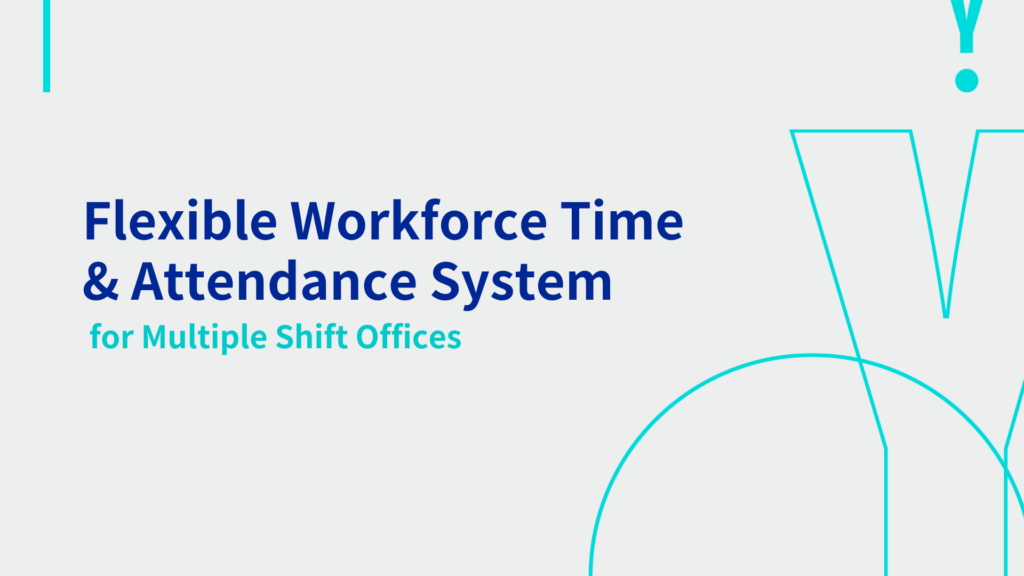
Managing attendance in multiple-shift offices is a challenging task. Traditional systems often lack flexibility, leaving managers stressed and employees dissatisfied. Businesses frequently face errors, delayed reporting, and compliance issues.
Manual tracking drains productivity and increases payroll mistakes. Moreover, rigid systems fail to support overnight shifts or rotating schedules. Consequently, HR teams waste valuable hours correcting attendance data. With growing workforce diversity, adaptability becomes essential.
Therefore, a flexible workforce time and attendance system is a necessity. It empowers managers to monitor every shift efficiently, reduces compliance risks, and improves employee satisfaction. Most importantly, it provides transparency, accuracy, and convenience for businesses that handle complex shift structures daily.
- Why Flexible Attendance Systems Have Significant Benefits for Businesses?
- Key Challenges Businesses Face with Multi-Shift Attendance Tracking
- How A Flexible Attendance System Solves Multi-Shift Problems?
- Features Businesses Should Look for in Flexible Attendance Systems
- Benefits of Using A Flexible Attendance System for Multi-Shift Offices
- Industry-Specific Use Cases of Flexible Attendance Systems
- Flexible Workforce Time And Attendance System Improves Management Strategy
- Choosing The Right Flexible Attendance System for Your Business
- Final Thoughts
Why Flexible Attendance Systems Have Significant Benefits for Businesses?
Employee scheduling no longer follows a simple nine-to-five model. Many industries now operate around the clock with multiple overlapping shifts. Without a flexible attendance system, businesses struggle to maintain accurate records. Errors directly affect payroll accuracy and employee trust.
Furthermore, compliance with labor laws becomes difficult. Mismanaged attendance records can lead to penalties, disputes, and reputational harm for growing organizations. Therefore, businesses need reliable attendance tracking that adjusts to various schedules, ensuring accuracy and compliance across all working hours.
Key Challenges Businesses Face with Multi-Shift Attendance Tracking
1. Inaccurate Manual Data Entry
Manual entry often results in errors. Employees may forget to punch in or out, leaving HR departments confused and overworked.
2. Lack of Real-Time Monitoring
Managers cannot track attendance instantly without automation. Consequently, absenteeism goes unnoticed, creating unexpected staff shortages and operational delays.
3. Complex Overtime And Compliance Issues
Different shifts bring unique overtime rules. Manual systems fail to calculate correctly, increasing compliance risks and disputes with employees. As a result, there’s a need for efficient attendance management software.
4. Difficulty Handling Rotating Shifts
Employees with rotating shifts require flexible scheduling tools. Rigid systems create conflicts, stress, and frequent mismanagement.
How A Flexible Attendance System Solves Multi-Shift Problems?
- Automates Check-In & Check-Out: A digital system automates employee clock-ins using biometric devices, mobile apps, or web portals. This reduces manual errors significantly.
- Supports Diverse Scheduling Needs: Whether fixed, rotating, or overnight shifts, flexible systems adapt easily. Businesses can customize attendance rules for different departments.
- Provides Real-Time Tracking: Managers can monitor attendance instantly from dashboards. Notifications alert HR when absenteeism or late arrivals impact productivity.
- Simplifies Overtime And Compliance Management: Automated rules ensure accurate overtime calculations. Moreover, compliance reports are generated instantly, protecting businesses from penalties and legal disputes.
Features Businesses Should Look for in Flexible Attendance Systems
Multi-Shift Scheduling Tools
The system must allow easy creation of different schedules for multiple teams without confusion or duplication.
Biometric, Along with Mobile Integration
Fingerprint or facial recognition ensures accuracy. Mobile-based check-ins support remote or on-site employees seamlessly.
Real-Time Analytics & Reports
Managers receive instant insights into attendance trends. These reports help improve workforce planning and reduce absenteeism.
Payroll Integration
Automated attendance data directly syncs with payroll. Therefore, salaries are processed accurately without delays or errors.
Cloud-Based Accessibility
Cloud integration of a workforce time and attendance system enables managers to access attendance records anytime, anywhere, supporting decentralized operations effectively.
Benefits of Using A Flexible Attendance System for Multi-Shift Offices
- Increases Productivity
Automation reduces manual workload, allowing HR to focus on strategic tasks. Employees also experience smoother scheduling with fewer disputes.
- Improves Employee Satisfaction
Employees appreciate transparency. Flexible systems provide clear shift schedules, overtime records, and leave balances. Hence, this increases trust and engagement.
- Enhances Compliance & Reduces Risk
Automated tracking ensures labor law compliance. Businesses avoid penalties, lawsuits, and reputational damage through accurate and accessible records.
- Saves Time And Costs
With reduced administrative workload, businesses save time. Additionally, payroll accuracy prevents costly salary disputes or corrections.
- Provides Scalability
Flexible systems grow with the business. Adding new shifts, departments, or locations becomes quick and seamless.
Industry-Specific Use Cases of Flexible Attendance Systems
Healthcare & Hospitals
Hospitals run 24/7 with critical shift rotations. Flexible systems ensure doctors, nurses, and staff schedules remain accurate and compliant.
Manufacturing And Industrial Units
Factories require rotating and overnight shifts. Automated attendance prevents staffing gaps and ensures compliance with strict labor regulations.
IT And BPO Companies
IT companies rely on night shifts and flexible work hours. An attendance management software streamlines tracking for global teams across time zones.
Retail & Hospitality
Retail outlets and hotels manage varied shifts daily. Flexible systems ensure smooth scheduling and optimal staffing during peak hours.
Flexible Workforce Time And Attendance System Improves Management Strategy
Attendance systems provide real-time data that influences broader workforce decisions. Managers identify attendance patterns, enabling proactive scheduling. Additionally, predictive analytics highlight areas of frequent absenteeism. Consequently, managers can create strategies to address staffing challenges effectively.
Moreover, integrating attendance data with HR systems enhances workforce transparency, building a strong foundation for better decision-making.
Choosing The Right Flexible Attendance System for Your Business
- Assess Your Current Challenges: Identify where manual processes cause errors. Look for gaps in compliance, payroll, or employee satisfaction related to attendance tracking.
- Prioritize Customization & Scalability: Ensure the system adapts to your business structure. As operations expand, the attendance solution must scale effortlessly.
- Verify Integration Capabilities: The system should integrate seamlessly with payroll, HR, and compliance platforms. This eliminates duplication of effort and increases efficiency.
- Ensure User-Friendly Experience: Employees and managers must find the system intuitive. Complex tools decrease adoption rates and reduce long-term value.
Final Thoughts
Managing attendance in multiple-shift offices requires more than traditional tools. Businesses need adaptable systems that align with evolving workforce demands. Flexible attendance systems provide automation, transparency, and compliance. A well-designed workforce time and attendance system reduces errors, increases productivity, and enhances employee satisfaction.
Moreover, these systems grow alongside businesses, supporting expansion while ensuring accurate attendance tracking. Therefore, investing in a flexible employee time and attendance system is a smart move for businesses operating with multiple shifts.
Connect with YOOV

WhatsApp:Click Here
Email:hello@yoov.com
Website:https://www.yoov.com/